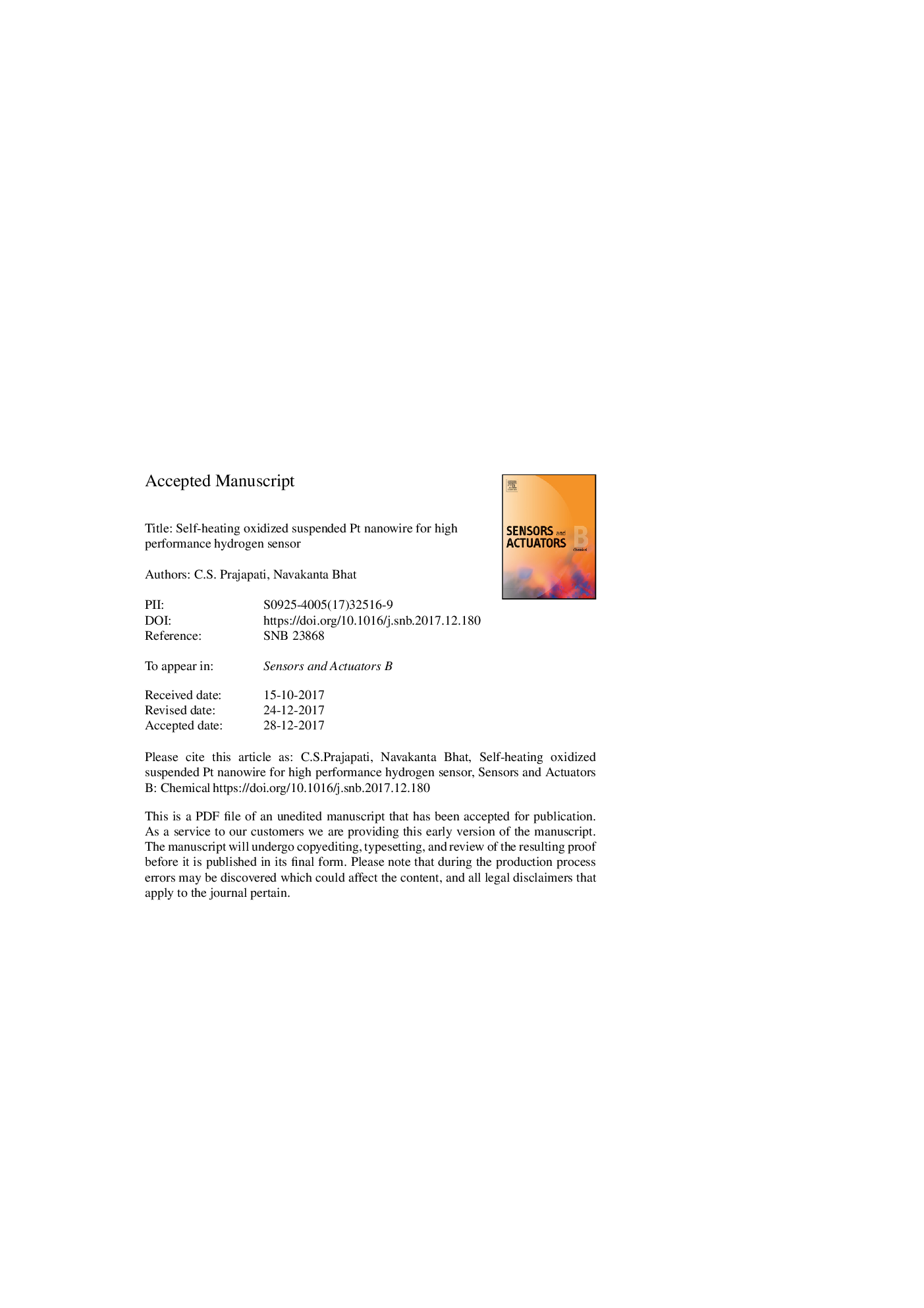| Article ID | Journal | Published Year | Pages | File Type |
|---|---|---|---|---|
| 7140797 | Sensors and Actuators B: Chemical | 2018 | 28 Pages |
Abstract
In this work, joule-self-heating of a suspended Pt nanowire, under oxygen ambient, is utilized to form PtOx/Pt nanostructure to develop a new type of 1-dimensional sensor device architecture for detection of hydrogen at room temperature. An optimum design space for the sensor is elucidated with the initial Pt nanowire thickness ranging between 10â¯nm and 80â¯nm. Single PtOx/Pt nanowire sensor, based on optimum metal (Pt) to metal-oxide (PtOx) junction can detect down to 100â¯ppm H2 with ultra-low power consumption of â¼45â¯nW. This study also investigates hydrogen sensing characteristics of an array of oxidized Pt nanowires, which enhances the response with the maximum sensitivity of â¼936%, compared to single PtOx/Pt nanowire sensor sensitivity of â¼13% for 100â¯ppm hydrogen. Nanowire array sensor provides the minimum detection limit of 500â¯ppb (â¼18.1%) with very fast response (â¼25â¯s) and recovery (â¼108â¯s) time. A phenomenological model is proposed to elaborate the nature of oxidation of joule-self-heated Pt nanowire in oxygen ambient.
Related Topics
Physical Sciences and Engineering
Chemistry
Analytical Chemistry
Authors
C.S. Prajapati, Navakanta Bhat,
